Life in Digi-Life towers has become considerably more stressful recently after our Mesh PC started to give out an annoying high pitched whine from one of the PC’s fans.
 At first, it was just an occasional background noise that would start just as quickly as it would stop. Then it started to become more regular. And louder. And more irritating.
At first, it was just an occasional background noise that would start just as quickly as it would stop. Then it started to become more regular. And louder. And more irritating.
Put the boot in
We noticed that a highly unscientific boot to the PC’s case (carry out at your own risk) often stopped the noise, but in the past few weeks the fan has become so noisy that we feared we may end up committing GBH on the machine.
With a level of grumbling that would make Mr Grumpy on Tax Return Day seem like a happy chap, we reluctantly pulled open the PC to look for the culprit.
Naturally, the machine decided to switch to ‘absolutely silent’ mode for the first ten minutes, but eventually we tracked down the culprit: the chipset fan on our ASUS A8N-SLI Deluxe motherboard.
 ‘No problem,’ we thought, we’ll just pop along to the nearest PC fair and grab a £2 replacement fan and silence will be, once again, truly golden.
‘No problem,’ we thought, we’ll just pop along to the nearest PC fair and grab a £2 replacement fan and silence will be, once again, truly golden.
Before shelling out for the fan, we thought we’d take a quick look on the Web to see if there were any issues about fitting replacement fans and that’s when the expletive count started to hit Gordon Ramsey levels.
It’s the chipset, Jim
It turns out that our motherboard is not only near legendary for its incessantly whining fan, but worst of all, Asus fitted the mobo (Motherboard) with a stupid, steeenkin’ non-standard fan. Aaargh!
Although we can only admire the near-Klingon-esque sci-fi looks of the Asus fan in question, its proprietary fitting means that you can’t simply slap in an off-the-shelf replacement.
According to some online forums, Asus will apparently send you a free replacement fan once you’ve filled in several forms in triplicate, but we haven’t heard back from them yet (the mobo comes with a three year warranty).
 A request for help on the urban75 forums brought forth disturbing tales of folks fitting their own replacement fans, a process which involves the enormous hassle of removing the entire motherboard – not a job for an impatient journo with pressing pub deadlines.
A request for help on the urban75 forums brought forth disturbing tales of folks fitting their own replacement fans, a process which involves the enormous hassle of removing the entire motherboard – not a job for an impatient journo with pressing pub deadlines.
Some had simply botched up a solution, with one user wedging in a standard chipset fan with a zip-tie, while another had manoeuvred a case fan to blow over the chipset at low revs.
Others suggested plumping for a passive cooling solution, employing a Zalman Silent Motherboard Heatsink – a bargain at under £3, but once again requiring the entire PC be taken apart.
We’ll be keeping you informed if Asus honour their free replacement fan offer (we’ve also written to Mesh, the PC makers), but for now you’ll have to excuse us if a few of our posts get a little tetchy as the ruddy thing has started making a whining noise all over again.
In the meantime, may we recommend that users looking to upgrade or build a new PC invest in a motherboard with passive chipset cooling rather than risk suffering the slings and arrows of an outrageous PC racket.
 There’s been back and forth between Yahoo and Google, following Google launching Gmail with an at-the-time world-shattering 1GB of storage back in April 2004.
There’s been back and forth between Yahoo and Google, following Google launching Gmail with an at-the-time world-shattering 1GB of storage back in April 2004.
 Ofcom have just announced a new regulatory code for Voice over Internet Protocol (VoIP) service providers operating in the UK.
Ofcom have just announced a new regulatory code for Voice over Internet Protocol (VoIP) service providers operating in the UK.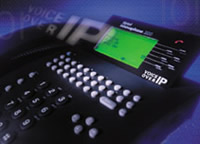 Before June 2007, all VoIP providers will be required to make it clear :-
Before June 2007, all VoIP providers will be required to make it clear :- At first, it was just an occasional background noise that would start just as quickly as it would stop. Then it started to become more regular. And louder. And more irritating.
At first, it was just an occasional background noise that would start just as quickly as it would stop. Then it started to become more regular. And louder. And more irritating. ‘No problem,’ we thought, we’ll just pop along to the nearest PC fair and grab a £2 replacement fan and silence will be, once again, truly golden.
‘No problem,’ we thought, we’ll just pop along to the nearest PC fair and grab a £2 replacement fan and silence will be, once again, truly golden.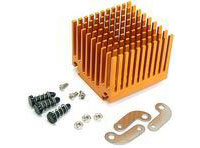 A request for help on the
A request for help on the 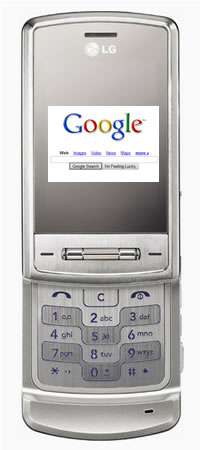 LG have committed to release at least ten new mobile phone and will jointly market them as LG-Google handsets.
LG have committed to release at least ten new mobile phone and will jointly market them as LG-Google handsets.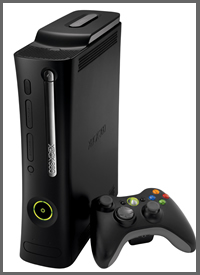 Yesterday Microsoft confirmed that the Xbox 360 Elite is a real product and will begin arriving in US stores on 29 April with an expected retail price of $480.
Yesterday Microsoft confirmed that the Xbox 360 Elite is a real product and will begin arriving in US stores on 29 April with an expected retail price of $480.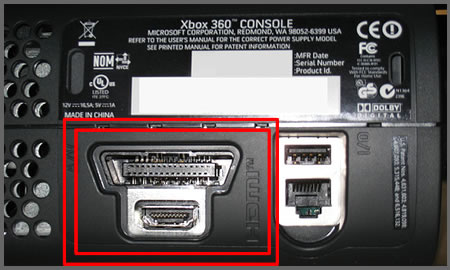
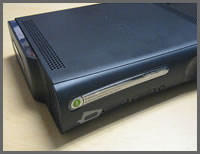 Peter Moore, Corporate Vice President – Interactive Entertainment Business, Microsoft, turned the hyperbole meter way up to deliver the following, “Today’s games and entertainment enthusiast has an insatiable appetite for digital high-definition content. Xbox 360 Elite’s larger hard drive and premium accessories will allow our community to enjoy all that the next generation of entertainment has to offer.”
Peter Moore, Corporate Vice President – Interactive Entertainment Business, Microsoft, turned the hyperbole meter way up to deliver the following, “Today’s games and entertainment enthusiast has an insatiable appetite for digital high-definition content. Xbox 360 Elite’s larger hard drive and premium accessories will allow our community to enjoy all that the next generation of entertainment has to offer.” Sometimes the simplest applications can make the biggest difference to your productivity, and we reckon that freeware Clipboard Recorder by LW-Works could be such a fella.
Sometimes the simplest applications can make the biggest difference to your productivity, and we reckon that freeware Clipboard Recorder by LW-Works could be such a fella.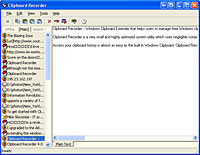 The neatest way to can access the extended clipboard is by selecting the Windows+V keys or clicking on the system tray icon and selecting the desired text from a list of ‘headlines.’
The neatest way to can access the extended clipboard is by selecting the Windows+V keys or clicking on the system tray icon and selecting the desired text from a list of ‘headlines.’ Although it doesn’t possess the most attractive interface we’ve ever had grace our desktop, Clipboard Recorder does a very useful job without any fuss and for free, we’re not complaining.
Although it doesn’t possess the most attractive interface we’ve ever had grace our desktop, Clipboard Recorder does a very useful job without any fuss and for free, we’re not complaining.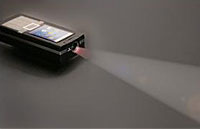 At the CTIA Wireless 2007 show in Orlando, Florida, tech firm Texas Instruments has been giving public demonstrations of its digital light processing (DLP) ‘pico’ projector – a teensy weensy movie projector that’s small enough to wedge into a mobile phone.
At the CTIA Wireless 2007 show in Orlando, Florida, tech firm Texas Instruments has been giving public demonstrations of its digital light processing (DLP) ‘pico’ projector – a teensy weensy movie projector that’s small enough to wedge into a mobile phone. Using the phone projector (“phonejector?” “prophonetor”?”), the mobile phone will eventually be able to beam DVD-quality video on to a screen or a wall, making it a workable portable video player or TV.
Using the phone projector (“phonejector?” “prophonetor”?”), the mobile phone will eventually be able to beam DVD-quality video on to a screen or a wall, making it a workable portable video player or TV.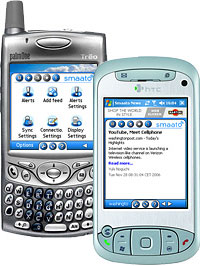 Smaato News is a RSS reader for smartphones that lets users read RSS feeds of their favourite Websites and blogs and get other information on the move.
Smaato News is a RSS reader for smartphones that lets users read RSS feeds of their favourite Websites and blogs and get other information on the move. Although the application is free, the program is supported by adverts which appear on the top section of the screen (“if you see something interesting, don’t hesitate to click,” implores their manual, rather optimistically).
Although the application is free, the program is supported by adverts which appear on the top section of the screen (“if you see something interesting, don’t hesitate to click,” implores their manual, rather optimistically).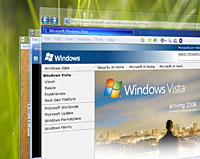 Microsoft’s Corporate VP Bill Veghte was clearly a chuffed fella, “We are encouraged to see such a positive consumer response to Windows Vista right out of the gate,” he purred in an official statement released on Monday.
Microsoft’s Corporate VP Bill Veghte was clearly a chuffed fella, “We are encouraged to see such a positive consumer response to Windows Vista right out of the gate,” he purred in an official statement released on Monday.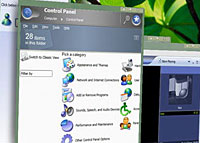 The figures seem to stack up well against the 17 million copies of Windows XP sold in the two months following its release in 2001, but the PC market has increased exponentially since then: according to IDC, total worldwide PC shipments hit 136 million units in 2001, a figure dwarfed by last year’s 227 million total sales.
The figures seem to stack up well against the 17 million copies of Windows XP sold in the two months following its release in 2001, but the PC market has increased exponentially since then: according to IDC, total worldwide PC shipments hit 136 million units in 2001, a figure dwarfed by last year’s 227 million total sales. Although Windows marketing director Bill Mannion acknowledged that the upgrade program had nudged the sales figures in an upward direction, he played down the numbers saying that upgraders didn’t make up the “core component of the 20 million.”
Although Windows marketing director Bill Mannion acknowledged that the upgrade program had nudged the sales figures in an upward direction, he played down the numbers saying that upgraders didn’t make up the “core component of the 20 million.”
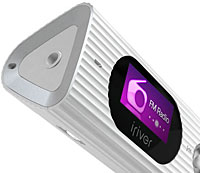 A tiny 1-inch 128 x 64, 65k colour CSTN LCD display gives status feedback and if the promo pics are anything to go by, it’s a mighty fine looking little screen too.
A tiny 1-inch 128 x 64, 65k colour CSTN LCD display gives status feedback and if the promo pics are anything to go by, it’s a mighty fine looking little screen too. The unit also packs in a handy FM tuner and voice recorder, with functions controlled by a wee joystick.
The unit also packs in a handy FM tuner and voice recorder, with functions controlled by a wee joystick.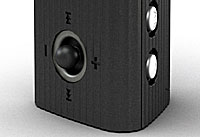 FM Radio Yes
FM Radio Yes